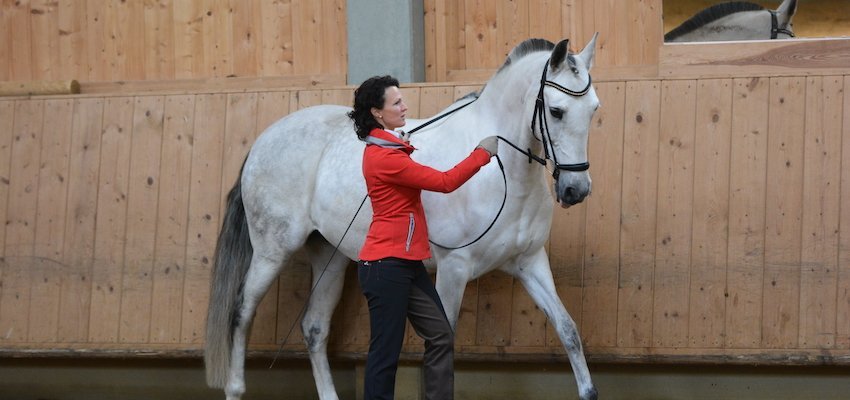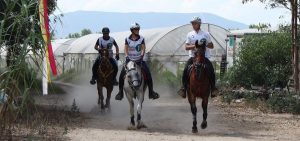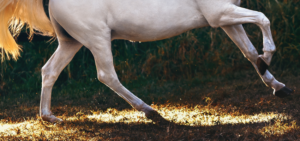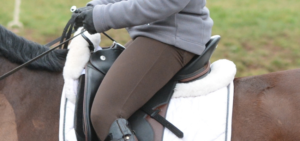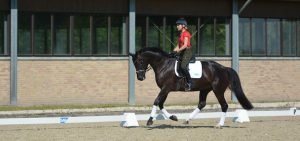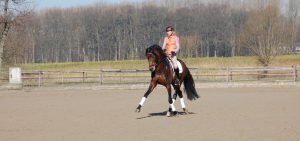Each and every outcome must be born of some type of beginning. In any process, it is not difficult to determine when steps have been skipped, when stages have been rushed. Building a solid foundation upon which to build any process, product, relationship, or development is crucial in obtaining a final product that exudes excellence. Such is true of horsemanship.
Summary
- What Exactly is Groundwork with Horses?
- What are the Different Types of Ground Aids?
- Optimal Development: The Advantages of Groundwork with Horses
- A Special Education: Implications & Groundwork for Horses of Special Cases
- Five Foundational Groundwork Exercises
- Build This Love from the Ground Up
What Exactly is Groundwork with Horses?
In the realm of Equestrianism, the term ‘aids’ refers to those tools that horsemen and horsewomen call upon to communicate with their horses. On a definitional level, aids are, in nature, means of communication that are, well, helpful. Thus, ground aids would be those things that allow trainers to communicate during groundwork with horses; helpful tools that allow for clearer, more seamless communication.
What are the Different Types of Ground Aids?
Ground aids can further be broken up into two categories: natural aids, and artificial aids. Artificial aids are those that come outside of our natural disposal. These types of aids would include things like lunge whips, driving reins, hobbles, lunge lines, and even blinders. These tools would not be ones that we would come into the round pen having already naturally possessed, but rather ones that we would need to find and bring with us.
Natural aids, however, are exactly the opposite. Natural aids are those means with which we are already naturally equipped with in order to communicate. During groundwork, our horses can call upon these references to come to understand what exactly it is that they are being asked to do. Such aids include:
• Body Language
• Space and Proximity
• Voice
• Touch
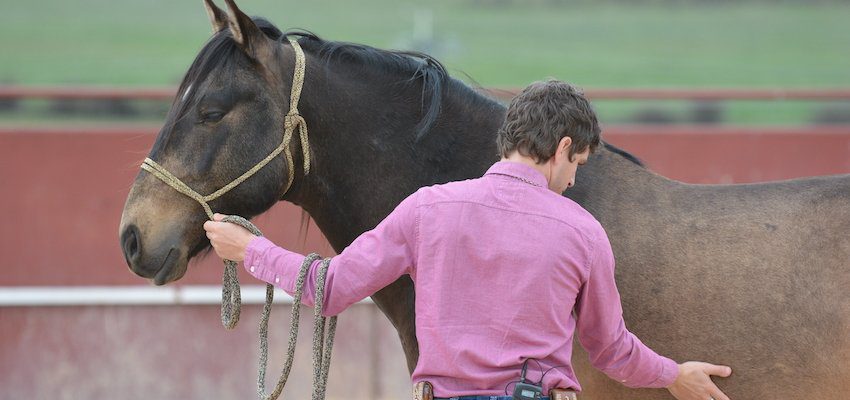
Optimal Development: The Advantages of Groundwork with Horses
Though working from the saddle provides some unique advantages to working with one’s horse, so too does groundwork during horses and their development. During groundwork horse and rider benefit from:
1- Being at eye level with the horse.
This works to reduce anxiety in young or green horses and also in horses that have experienced trauma in their past.
2 – Work safely.
Through training and experience, riders are able to put into place a variety of safeguards while mounted, but nothing compares to the degree of safety experienced while working on the ground. Although danger remains present, during groundwork horses are not mounted, therefore there exist no threats of a fall, and far less risk to the horse; naturally working to increase the comfort level of both parties. This reduced stress aids in allowing both stakeholders the ability to focus more keenly upon the task at hand, as less attention is spent working to reduce risk.
3 – Provide Riders a Unique Perspective.
During groundwork, the horse is at once visible to the trainer in full. The handler can see her horse’s natural movement more completely and becomes more keenly aware of any and all factors at play that work to impact her horse’s gait. If the horse is sore, or is off-balance, this will be something the handler will be able to visually perceive. Many of the things that would otherwise go unnoticed in the saddle are things one is able to notice while working on the ground.
4 – Establishes Boundaries.
It is during groundwork the horse learns how to utilize space, both for the purposes of movement, as well as to accommodate or to take into account the space between himself and the trainer. This works then in establishing what some horsemen have come to refer to as ‘respect’, but what in actuality is simply an understanding of space and proximity and the limits and consequences for violating the expected space between horse and rider.
5 – Develops Trust.
An essential component of any healthy horse-rider relationship, during groundwork the horse develops the trust necessary for safe, effective collaboration. It is in groundwork that horses will learn they can trust us. It is in groundwork that horses receive the most affection, the most praise and positive reinforcement. It is in groundwork that horses come to learn our love and experience the deep compassion and reverence that we maintain for them. Be it in the arena or on the trail, at the end of the day, trust is at the center of our relationship with them.
Do you want to know more about building trust and gain a better understanding of your horse’s behaviour? Our horsemanship courses got you covered.
A Special Education: Implications & Groundwork for Horses of Special Cases
Trainers look at groundwork with horses not only as a foundational basis upon which to build and develop horses, but also as a tool that can be utilized for special cases. The following horses can benefit tremendously from such a regimen:
1 – Young Horses
Younger or smaller horses may not be unable to withstand the full weight of a rider until they are approximately 2-3 years of age. Prior to this milestone, their bodies, and subsequently, their skeletal structures are still in full-blown development, so riding can do permanent, irreversible damage. Groundwork for horses of this nature provides a way to not only begin training early, but to develop a healthy, long-lasting relationship that will translate to the saddle and all areas of future interaction.
2 – Geriatric Horses
Horses in their Golden Years also derive tremendous benefit from groundwork exercises. These older horses may no longer be capable of physically carrying a rider without pain, but they long for human interaction and groundwork for horses in this type of situation provides a fabulous opportunity to keep these horses’ minds sharp and their hearts full.
3 – Injured Horses
Horses recovering from injury will also find groundwork exercises advantageous during the healing process. Rather than letting one’s horse remain idle during recovery, groundwork for horses healing from an injury is a way that trainers can still introduce and utilize a vast array of ground exercises to maintain their training program and keep their horses interested and alert. Often, these exercises can even advance, or expedite the healing process, all working to support the needs of a happy, healthy horse.
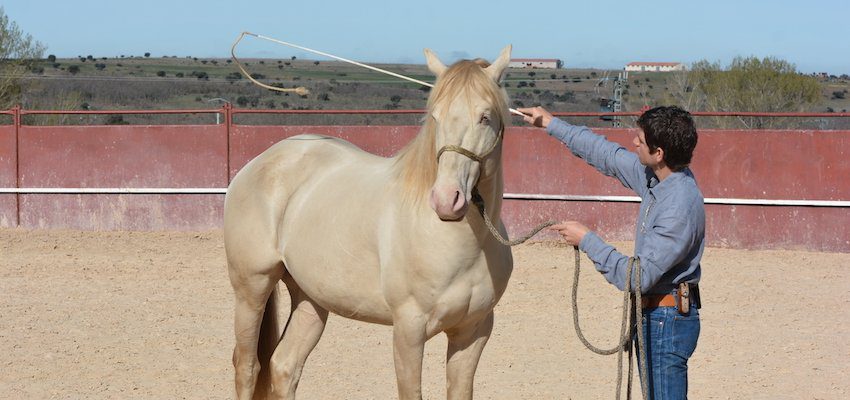
Five Foundational Groundwork Exercises
1 – Standing
This may seem like a no-brainer for some people but standing is a skill that should essentially be explicitly taught and continuously practiced and revisited. It is not natural for horses to stand still for long periods of time outside of grazing, and even then, horses are in constant movement. Horses need to learn to be able to stand squarely and alertly, albeit calmly, for a variety of purposes, so be sure to work this into any training regimen.
2 – Leading
Again, this may strike some as a built-in skill, but leading well is a skill that must be both learned and practiced. Horses should be able to lead in a manner that is both relaxed though simultaneously attentive, and time spent rehearsing this skill is time well-spent as it is used daily and translates into a variety of tasks and purposes.
3 – Backing
Backing is a functional, practical skill necessary for a variety of purposes on a near-daily basis. Horses should back calmly and willingly and teaching one’s horse to back is a crucial tool, indeed.
4 – Stopping
Stopping too is both practical and functional but also relates very much so to the safety of both horse and rider. As important as it is in the saddle, this is a skill that is taught and developed on the ground, and it is essential that trainers avoid rushing through the development of a horse’s stop.
5 – Jogging
The fifth and final basic skill is a horse’s ability to lead with greater movement, and practicing leading a horse while moving at a nice slow jog is an awesome skill to master. Horses should be able to transition into the second gait calmly and readily and should just as easily be able to transition back into a walk or all the way back down to a complete stop.
Build This Love from the Ground Up
Some horse enthusiasts might feel as though there is nothing better than jumping onto a horse and opening them up; that there is nothing greater than galloping on a horse full speed, free of restraint, of obstacles, completely light and free in flight. The excitement they attribute to the sport is one they associate with riding and often high-speed riding alone.
But those whose aim is truly to develop their horsemanship know the tremendous advantage of developing horses from the ground up. They understand the role groundwork plays in laying the foundation for a healthy trusting relationship, and they understand that each exercise works to build upon others, creating a more comprehensive understanding of any given trainer’s program and how all the cues, essentially, work together in chorus.
If our aim as horseman and horsewoman is to build a relationship of excellence, to develop a prospect capable of seeing his or her own full potential in the richest of ways, then we must always remember to start at the beginning; to build this love from the ground up.
If you want to incorporate groundwork into your training, check out these courses and get great tips as well as inspiration from our experts.

